#John Kongos
Explore tagged Tumblr posts
Text
Welcome to all our new readers. (Thanks Johnnie!)
‘Kongos’: John Kongos Hi! … and a very warm welcome to everyone who may have joined us for the first time at ‘Once Upon a Time in The ’70s’ as a result of hearing our mention on the Johnnie Walker’s Sounds of The ’70s radio show. I should firstly thank Johnnie and his team for allowing John Kongos his second, and I suspect, final entry into The Jukebox. I have to concede, I took pelters at…

View On WordPress
#1970s blogs#70s#featured#John Kongos#Johnnie Walker#Johnnie&039;s Jukebox#memories of the 1970s#Radio 2 Sounds of the Seventies#Seventies#Sounds of the 70s#sounds of the seventies#Tokoloshe Man
0 notes
Text
Gallery Collection 001

Published: 2-21-2024 | Updated: N/A SUMMARY This is the first in a series of upcoming investment objects for Sims 2 – things your sims can use to generate income over time. From 1975-2000, Anheuser-Busch, Inc. commissioned 30 paintings of African kings and queens for an extended outreach and marketing campaign. This set of paintings features artwork from this amazing series. Celebrate Black History Month 2024! #co2bhm #bhm2024 #sims2bhm. *No copyright infringement intended – I own no rights to these images.
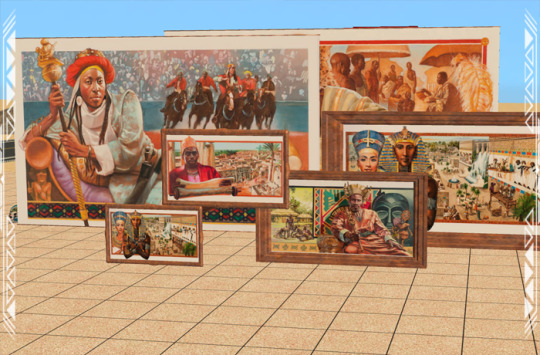
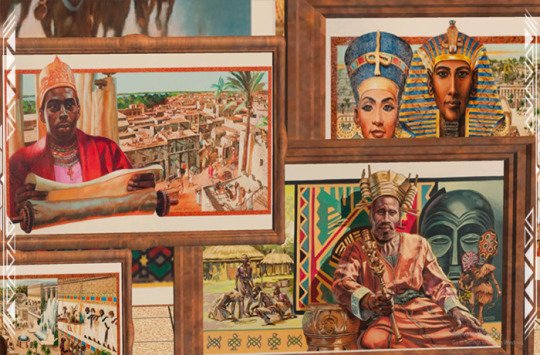
DETAILS Requires Sims 2. Requires Apartment Life for shiftability. §1K-15K | Buy > Deco > Wall Hangings Paintings are centered on 1-tile but cover more tiles than that. They come in various gallery sizes and images have been edited to fit the mesh. After purchase, their value increases by approximately 2% daily – watch out for burglars! Files with “MESH” in their name are REQUIRED. Frame recolors include EA/Maxis and yeti textures. Frame and painting recolors are merged into two files so you’ll have to take them or leave them. ITEMS Great Kings & Queens of Africa: Paintings 001-006 (92-764 poly) DOWNLOAD (choose one) from SFS | from MEGA

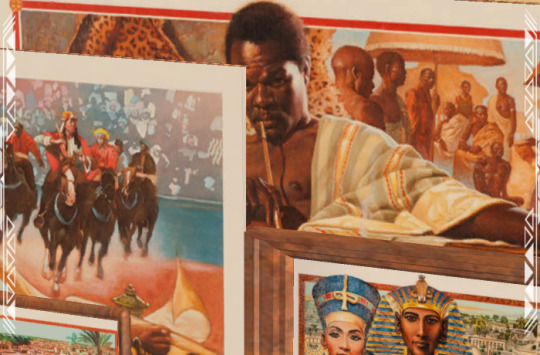
IMAGES
Akhenaton Pharaoh of Egypt (1375-1358 BC) by Barbara Higgins Bond
Alfonso I King of the Kongo (circa 1486-1543) by Carl Owens (1929-2002)
Askia Muhammaed Toure King of Songhay (1493-1529) by Leo Dillon
Benhanzin Hossu Bowelle—The King Shark (1841-1906) by Thomas Blackshear II
Cleopatra VII Queen of Egypt (69-30 BC) by Ann Marshall
Hannibal Ruler of Carthage (247-183 BC) by Charles Lilly
Hatshepsut The Ablest Queen of Far Antiquity (1503-1482 BC) by Dean Mitchell
Idris Alooma Sultan of Bornu (1580-1617) by Charles Lilly (1949-)
Ja Ja King of the Opobo (1821-1891) by Jonathan Knight
Khama III The Good King of Bechuanaland (1819-1923) by Carl Owens
Makeda Queen of Sheba (960 BC) by Debra Edgerton
Mansa Kankan Musa King of Mali (1306-1337) by Barbara Higgins Bond
Menelek II King of Kings of Abyssinia (1844-1913) by Dow Miller
Moshoeshoe King of Batsutoland (circa 1786-1870) by Jerry Pinkney
Mwana Ngana Ndumba Tembo—Ruler of the Angolan Tchokwe (1840-1880 circa) by Kenneth Calvert
Nandi Queen of Zululand (1778-1826 AD) by HM Rahsaan Fort II
Nefertari Nubian Queen of Egypt (192-1225 BC) by Steve Clay
Nehanda of Zimbabwe (1862-1898) by Lydia Thompson
Nzingha—Amazon Queen of Matambo (1582-1663) by Dorothy Carter
Osei Tutu King of Asante (circa 1650-1717) by Alfred Smith
Queen Amina of Zaria (1588-1589) by Floyd Cooper
Samory Toure The Black Napoleon of the Sudan (1830-1900) by Ezra Tucker
Shaka-King of the Zulus (1787-1828) by Paul Collins
Shamba Bolongongo African King of Peace (1600-1620) by Roy LaGrone
Sunni Ali Beer King of Songhay (circa 1442-1492) by Leo Dillon
Taharqa King of Nubia (710-664 BC) by John Thomas Biggers
Tenkamenin King of Ghana (1037-1075 AD) by Alexander Bostic
Thutmose III Pharaoh of Egypt (753-712 BC) by Antonio Wade
Tiye The Nubian Queen of Egypt (circa 1415-1340 BC) by Leonard Jenkins
Yaa Asantewa Queen of Ghana (1863-1923) by Barbara Higgins Bond CREDITS No copyright infringement intended – I own no rights to these images. Artwork and trademarks are the property of their respective creators and/or owners. If this exceeds fair use, please contact me via private message. Thanks: Simming and Sketchfab Communities. Sources: Any Color You Like (CuriousB, 2010), Beyno (Korn via BBFonts), Console Certificates (d_dgjdhh, 2019; 2011), EA/Maxis, Gyeongbokgung Sajeongjeon Painting (National Heritage Administration, 2024 via CCA; Sketchfab), Great Kings and Queens of Africa Series (Anheuser-Busch, Inc., 1975-2000; Kentake, 2016), Offuturistic Infographic (Freepik), Painting by Zdzislaw Beksinski (Sosnowski, 2018 via CCA), Yeti Metals (Shastakiss, 2017).
88 notes
·
View notes
Text
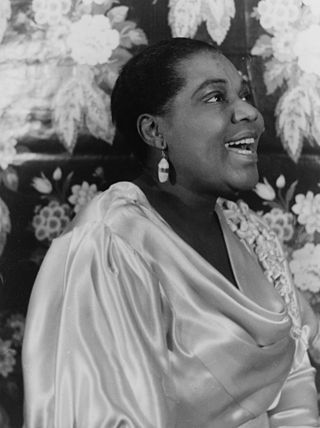
Several African American blues singers and musicians composed songs about the culture of Hoodoo, including W.C. Handy, Bessie Smith, Robert Johnson, Big Lucky Carter, and Al Williams. African American blues performers were influenced by the culture of Hoodoo and wrote songs about mojo bags, love workings, and spirits. Their songs brought awareness of Hoodoo practices to the American mainstream population.

Several blues songs describe love charms or other folk magic. In her "Louisiana Hoodoo Blues" Gertrude Ma Rainey sang about a Hoodoo work to keep a man faithful: ""Take some of you hair, boil it in a pot, Take some of your clothes, tie them in a knot, Put them in a snuff can, bury them under the step…." Bessie Smith's song "Red Mountain Blues" tells of a fortune teller who recommends that a woman get some snakeroot and a High John the Conqueror root, chew them, place them in her boot and pocket to make her man love her. Several other Bessie Smith songs also mention Hoodoo. The song "Got My Mojo Working," written by Preston "Red" Foster in 1956 and popularized by Muddy Waters throughout his career, addresses a woman who is able to resist the power of the singer's Hoodoo amulets.
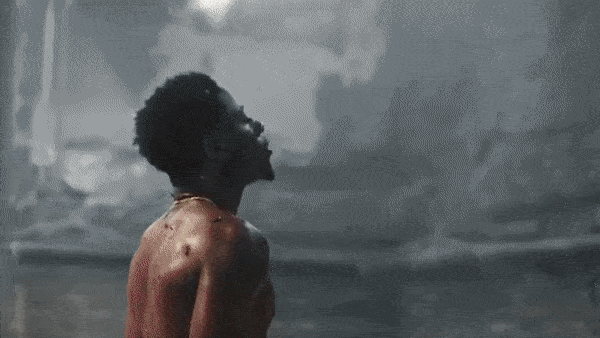
Hoodoo practitioner Aunt Caroline Dye was born enslaved in Spartanburg, South Carolina and sold to New Port, Arkansas as a child, where she became known for soothsaying and divination with playing cards. She is mentioned by name in the Memphis Jug Band's "Aunt Caroline Dye Blues" (1930) and in Johnny Temple's song "Hoodoo Woman" (1937).

Blues singer Robert Johnson is known for his song about going "down to the crossroads" to sell his soul to the devil to become a better musician. Some authors suggest that the song invokes a Hoodoo belief in crossroads spirits, a belief that originated in Central Africa among the Kongo people. However, the devil figure in Johnson's song, a black man with a cane who haunts crossroads, closely resembles Papa Legba, a spirit associated with Louisiana Voodoo and Haitian Vodou

#blues music#memphis#vodun#voodoo#hoodoo#african#afrakan#kemetic dreams#africans#afrakans#brown skin#afrakan spirituality#african culture#rootwork#ancestor veneration#pagans of tumblr#conjure#witchblr#african music
116 notes
·
View notes
Text
Muppet Mainstage, November 11th, 2024
youtube
“All Around the World” was written by John Kongos in 1985 as a bonus record for Fraggle Rock. The song was sung by Uncle Traveling Matt (Dave Goelz) with background vocals from Gobo (Jerry Nelson), Wembley (Steve Whitmire), and Red (Karen Prell).
#mupposts#muppets#muppet mainstage#fraggle rock#uncle traveling matt#gobo fraggle#wembley fraggle#red fraggle#Youtube
7 notes
·
View notes
Text
Round 2 Polls:
(Projected length: 32 days)
(Bonus Rounds: Here)
Day 1:
1. Ogai Mori vs. Pascal
2. The Doctor vs. Franky
Day 2:
3. Madoc vs. Daenerys Targaryen
4. Inspector Barnes vs. Bright Noa
Day 3:
5. August vs. Claude Frollo
6. Cale Henituse vs. Leif
Day 4:
7. Simon Petrikov vs. Chiron
8. Yami Sukehiro vs. Sei Handa
Day 5:
9. Gintoki Sakata vs. Eithan Arelius
10. Dr. Gregory House vs. Maglor
Day 6:
11. Wolverine vs. Izumi Curtis
12. Roy Mustang vs. Abraham van Helsing
Day 7:
13. Askeladd vs. Rune Saint John
14. Guts vs. Jake Sully
Day 8:
15. Sir Reginald Hargreeves vs. Jean Valjean
16. Kohachi Inugami vs. The Fix
Day 9:
17. Kanan Jarrus and Hera Syndulla vs. Gumpa
18. Aphmau vs. Agent Washington
Day 10:
19. Grace vs. Vector the Crocodile
20. Alec Lightwood-Bane vs. Dadan
Day 11:
21. Bobby Nash vs. William Adama
22. Korosensei vs. The Warrior of Light
Day 12:
23. Kaname Date vs. Jack Starbright
24. Satoru Gojo vs. Dutch Van Der Linde
Day 13:
25. Xie Lian vs. Takashi “Shiro” Shirogane
26. Tom and Maddie Wachowski vs. Sakyo Furuichi
Day 14:
27. Welt Yang vs. Herlock Sholmes
28. Carlisle and Esme Cullen vs. Dracule Mihawk
Day 15:
29. Artemy Burakh vs. Barry and Iris West-Allen
30. Kazuma Kiryu vs. Yuugo and Lucas
Day 16:
31. Master Wu vs. Dave Seville
32. Axel vs. Izumi Tachibana
Day 17:
33. Arlecchino/The Knave vs. Sarah Jane Smith
34. Qifrey vs. Bell-Mere
Day 18:
35. Bobby Singer vs. Cap’n Craig Cuttlefish
36. Professor Hershel Layton vs. Donna Hanscum
Day 19:
37. Giovanni Potage vs. Ingo
38. Miles Edgeworth vs. Vil Shoenheit
Day 20:
39. Nick Fury vs. Dalinar Kholin
40. King Dedede and Meta Knight vs. Kavax au Telemanaus
Day 21:
41. Arataka Reigen vs. Jawbone O’Shaughnessey
42. Gol D. Roger vs. Abigail Pent and Magnus Quinn
Day 22:
43. Toriel Dreemurr vs. Master Kongo
44. Pongo and Perdita vs. Dr. Ivo “Eggman” Robotnik
Day 23:
45. Lance Strongbow vs. Derek Hale
46. Tony Stark vs. Roronoa Zoro
Day 24:
47. Jody Mills vs. Eric Gale
48. “Red-Haired” Shanks vs. Kurogane and Fai D’Flourite
Day 25:
49. Han Muchun vs. Iroh
50. Splinter vs. Lilia Vanrouge
Day 26:
51. Bruce Wayne vs. Thomas O’Malley
52. Jupiter North vs. Keishin Ukai
Day 27:
53. Kim Dokja vs. Roberto de Niro
54. Shōta Aizawa vs. Doctor Carmilla
Day 28:
55. Mendoza vs. Soundwave
56. David Wymack vs. Ash Ketchum
Day 29:
57. Wen Kexing and Zhou Zishu vs. Yondu Udonta
58. Eda Clawthorne vs. Gavroche
Day 30:
59. Fukuzawa Yukichi vs. Optimus Prime
60. Camila Noceda vs. QSMP!Philza
Day 31:
61. Phoenix Wright vs. The Dragonborn
62. Bruno Bucciarati vs. Oliver Queen
Day 32:
63. Whitebeard vs. Otose
64. Sojiro Sakura vs. Yukari Yakumo
#mod is deeply looking forward to day 22 and day 30#mod speaks#serial adopters bracket#round 2#tumblr tournament#tumblr tourney#tumblr polls#poll bracket#character bracket#fandom bracket
21 notes
·
View notes
Text
Euclase and Motivation Boredom
Note: this has been taken from my Twitter thread, but there's some edits I've been wanting to make, and generally multi-platform access is a good thing, especially here with how tags work on this site as well the amount of Euclase metas already present here.
It may feel awkward for this post to be based off of a source based in Western philosophy knowing the series' Buddhist influences, but the former's concise terminology helps illuminate the series without any evident conflicts. Conveniently, I have only needed to base this thread off of one article: "Immortality and Boredom" by John Martin Fischer and Benjamin Mitchell-Yellin.
If one believes that immortality necessarily causes boredom, Fischer and Mitchell-Yellin have observed two notable ways in which one could make this argument. One way, coined as "content-boredom", argues that immortality would eventually exhaust the supposed finite amount of desires that would drive a person to live (Fischer and Mitchell-Yellin 355). This is partially shown through the Lunarians. Their desire to pass on stems from the resignation that they have done everything that could bring any sort of pleasure. The Lunarian's problems regarding immortality do not stem from content-boredom, for there is a more existential component present, but it is a real factor. Content-boredom is limited to the Lunarians, for they, outside of Kongo, have lived much longer than anyone else.
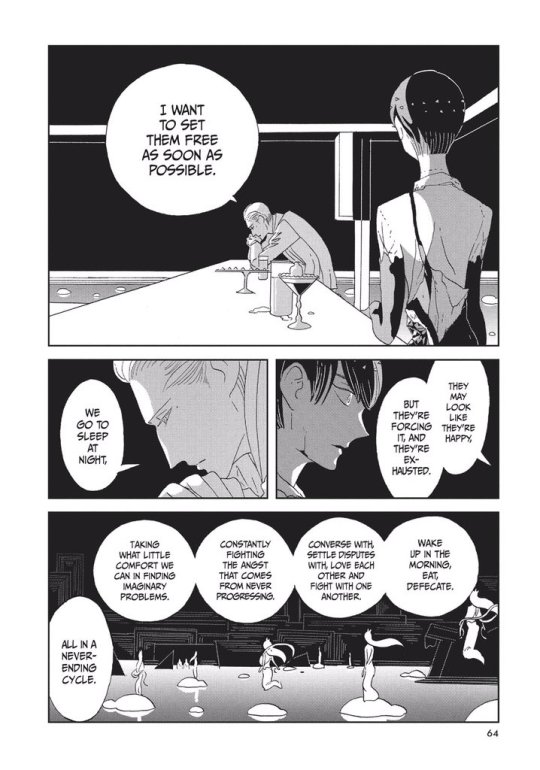

The other way to argue immortality that causes boredom is to say that an immortal life would not be constrained by time, and, therefore, lack a certain urgency. Lacking the energy to actualize one's desires and complete projects would make life dull. This is labeled as "motivation-boredom" (361). While perhaps not as intuitive argument as content-boredom, motivation-boredom is an application of the common practice of procrastination at its most extreme. Where one may put off a task until the last possible moment despite wanting and knowing that they should have started that task earlier, people who support the idea of motivation-boredom believe people can and will put off everything indefinitely since there is no last possible moment. Motivation-boredom is best substantiated through the Earth Gems, but most importantly, through Euclase, an elder gem who displays more apparent control over the Earth Gems as the series progresses. Showing how this is the case is what the real substance of this post is.
First of all, Euclase's role in demonstrating motivation-boredom is something only Euclase can properly do. The other elder gems (i.e. Yellow Diamond, Padparadscha, and Alexandrite), are caught in problems regarding immortality that are outside of boredom. The same reasoning applies to Kongo.
Ironically, they acknowledge the idea that immortal existence fundamentally differs from mortals in a psychological sense, but they (through their own admission) ultimately seem unaware of how motivation-boredom affects their judgments. Before any budding criticism comes to mind in how the previous tweet is phrased, Euclase does only mention that an immortal being's sense of danger being distorted—not necessarily an immortal being's sense of urgency being distorted. However, the following paragraphs should demonstrate the compatibility and sometimes interchangeability between the two traits. Euclase's distorted sense of danger is actually rooted in Euclase's distorted sense of urgency.

Relative to other gems in the series, Euclase's conversations take a lot of focus on temporality. There are many examples. In fact, Chapter 4, their first major appearance, foreshadows this tendency. The third image shows a juxtaposition between Euclase and Phos in valuing time.
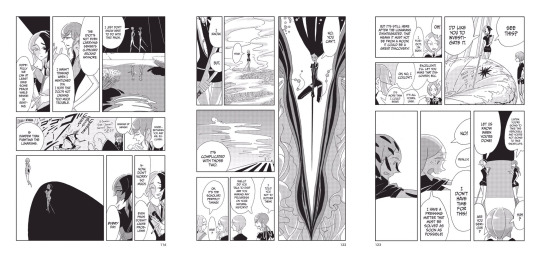
Another example early in the series (one in which credit goes to Shamu, for he pointed this out during our note-taking process of this video) takes place during Chapter 7 when Jade reports that Euclase dropped their schedule and is in need of more time to reassign roles for the future. The reason is indirectly linked to Phos, which hints at how Phos will impact Euclase’s future.

Euclase, contrasting from the Lunarians, values the benefits that come from the lack of urgency. With infinite time comes the infinite opportunities for conflicts to resolve. The earliest moments where this sentiment shows itself is through Chapter 41 and Chapter 58.
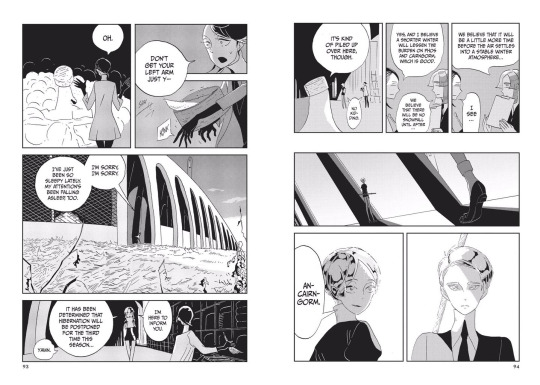
While a bit digressive for this post, Euclase's word choice incorporates time once more to compliment Phos' condition by returning from the moon in Chapter 58. There is an irony here in that Euclase's support for the idea that a lack of urgency eventually will towards positive outcomes through patience is vindicated through Phos. Euclase's encouragement to Phos could have only happened through the systemic neglect that Phos is under.

Chapters 60 and 61 display where motivation-boredom's consequences start to directly impact the plot. Euclase recognizes the threat Phos poses but fails to enact any action outside of sharing their suspicion to Jade and expressing an ambiguous threat towards Phos. Euclase failure here stems from two reasons. One is that Euclase misreads the identity of Phos. Lapis is a gem known for their analysis paralysis. Euclase, by believing Lapis has the most control over LaPhos, assumes that Phos would not follow through any plans with such haste. Furthermore, by predicting their actions through the Lapis-colored lens, they fail to consider what would happen if really is Phos in control, a gem that carries human-like tendencies to carry out tasks with an urgency.

The second reason originates from Euclase's inability to detect time constraints. Notice the juxtaposition between Euclase and Phos here: the threat not only fails to prevents the gems departing for the moon but actually hastens the result.

Even though Euclase manages to prevent a few gems from leaving the moon, it's a pyrrhic victory, suggesting once more how Euclase's inability to feel urgency causes negative results. Consider Rutile, whom Euclase successfully prevents from going to the moon. Rutile could have served as a pivotal piece in preventing the departure to the moon, for they were the only one to consider disseminating Phos’ plan to Kongo. Instead, Rutile’s psyche starts to take a turn for the worse in the series. Euclase’s failure here is multilayered.
Euclase starts to recognize urgency more due to Phos. Kongo's pending request for a self-imposed exile forces Euclase into action. Why Euclase feels compulsion to stay on Earth is slightly outside the scope of this post, but Euclase's argument for staying on Earth lies in identity and its connection to time. Note that Euclase's urge to make up each other's shortcomings results from Phos' actions as well as Kongo's response being tied to the relationship future life forms and the present day.
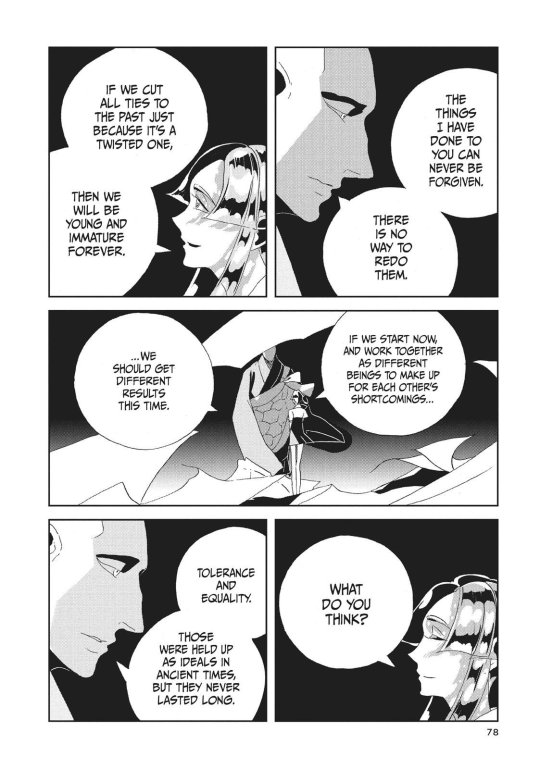
The scouting mission in Chapter 69 implies that Euclase's natural state is one that tries to maintain a state that avoids urgency when they can. Pad's analysis, considering their constant state of inactivity, suggests that Euclase's character has been unchanging for a while. The threat of Phos does urge Euclase and the Earth gems to respond with a defensive plan, however, as seen in Chapter 70. The following interaction between Phos and Euclase centers once more on time.

Euclase's decision for everyone to rest after the night raid lies upon the premise that relationship between Phos and the Lunarians is currently one of dysfunction. Urgency to act only comes when the danger is immediate and the time constraints are evident for Euclase.
When Phos is separated for 220 years, Euclase once again approaches the problem under the assumption that the amount of time to solve all the conflicts with Phos is not constrained by time. The following chapter shows Euclase's belief that Phos no longer endangers their safety; the small amount of motivation they have to ask Kongo to pray is caused not out of sympathy for Phos but instead of out consideration of the possibility that that Lunarians might invade.
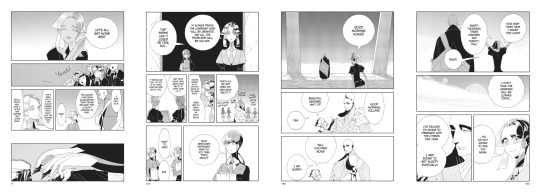
While Euclase's reasoning to delay cleaning up during Kongo's birthday party may have justifiable reasoning, it does show how motivation-boredom even plays a part in casual situations.

Upon recognizing danger from Phos' imminent invasion, Euclase's response is to buy time, which seems rather indicative that their response to urgency is infinitely delay whatever causes urgency.

Through Alexandrite's action sequence, due to the positioning of Euclase at the start of the sequence compared to the other images, it almost seems as if Euclase is trying to delay inevitable danger by using their companions to buy time.
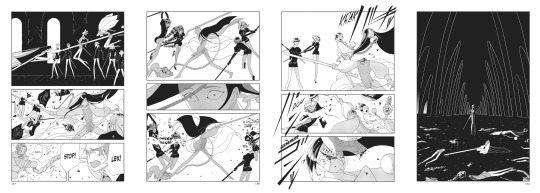
Based on Euclase's previous actions, their reasoning for their negotiation plea towards Phos expresses sincerity. However, as time has proven before, Phos shows that they need to be the danger in order for goals and desires to be reached. Euclase's shortcomings show that becoming immortal does not mean everything can be put off until later.
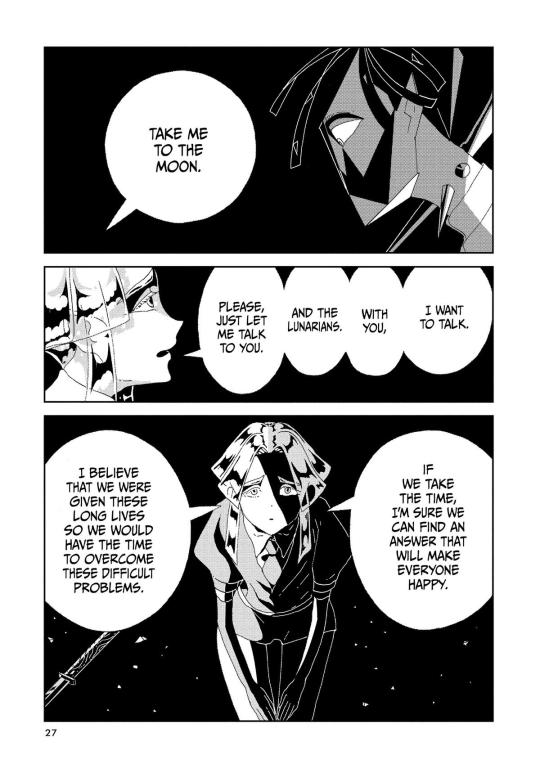
When wondering why Euclase fails to get anything done later in the series, a serious factor to consider is the influence of motivation-boredom. Euclase's passivity may not be entirely based on intentional callousness, for their existence and their relation to time distorts all decision making, and living as they have distances themselves from a perspective like Phos' and reinforces those distortions.
To wrap everything up, Houseki no Kuni frequently criticizes immortality. Does the depiction of both kinds of boredom claim are aspects that necessarily happen to those who have immortality? No. In a sense the two types of boredoms oppose one another, yet they coexist in this story. However, having these two kinds of boredoms correspond to a respective immortal species shows how these criticisms could happen to those who are immortal. Additionally, unlike content-boredom within Houseki no Kuni, motivation-boredom does not directly lead to unhappiness for reasons concerning the lack of energy to fulfill desires like its supporters suggest. Instead, the manga shows that those in power who lack urgency due to their immortality can lead to excessive and idle conservatism and eventual, destructive consequences by not recognizing and responding to time-sensitive issues. To me, that sounds more like a warning rather than a criticism.
The paper summarizes both types of boredoms, but interestingly, they reject these two concepts as sufficient reasons to oppose immortality. Originally, before making this post, I did not think either forms of boredoms had any merit, but analyzing Euclase has shown me that immortality would, while not necessarily causing motivation-boredom, a distortion of urgency within projects that would require it, thereby risking to harm one's quality of living. Furthermore, for supporters of content-boredom, reading "The Makropulos case: reflections on the tedium of immortality" by Bernard Williams may interest you. For supporters of motivation-boredom, I cannot say I have read them, but Fischer and Mitchell-Yellin's response on content boredom is based off of Todd May's "Death" and Martha Nussbaum's "The Therapy of Desire".
Fischer, John Martin, and Benjamin Mitchell-Yellin. “Immortality and Boredom.” The Journal of Ethics, vol. 18, no. 4, 2014, pp. 353–72. JSTOR, http://www.jstor.org/stable/43895884.
#euclase#land of the lustrous#hnk#phosphophyllite#kongo sensei#houseki no kuni#rutile#hnk meta#motivation boredom#hnk analysis#i doubt it's really analysis but it's close enough for those interested in the tag
71 notes
·
View notes
Text
RE: Was Baron Samedi worshiped in New Orleans prior to the late 20th century?
This one is also about the actual lwa.
Baron Samedi can aptly be described as not just the most iconic lwa, but one of the most iconic things from New Orleans Voodoo. Ironically, I have only found inconclusive evidence that he was worshiped in New Orleans during the 19th or early 20th centuries.
In American popular media, Baron Samedi is frequently conflated with other Haitian deities, called the Gede. The real-life Baron Samedi has his origins in Haitian Vodou, as does Maman Brigitte (Gran Brijit). The Haitian lwa are derived from African deities, among the most important being the Dahomean trickster god Legba (himself, derived from the Yoruba deity Eshu). Over the course of Haitian history, Dahomean Legba was refracted into Papa Legba, Met Kalfou, and the Gede - by extension, the Bawons, including Baron Samedi. This explains why the Gede are trickster deities of sexuality and liminality, who embrace all that is taboo - just like Dahomean Legba!
19th Century New Orleans Voodoo was greatly influenced by Haitian Vodou, due to the massive influx of Haitian refugees that arrived in the Crescent City after the Haitian Revolution. Following the post-Revolution migration wave, several Haitian lwa became features of New Orleans Voodoo, including:
Papa Legba → “Papa Limba” or “La Bas”, syncretized with St. Peter
Damballah → “Daniel Blanc”, syncretized with St. Michael
Agassu → “Yon Sue”, syncretized with St. Anthony
Ogou Feray could have also been worshiped as “Joe Ferraille” (“Joe Feray”), and Ayizan Velekete as “Vériquité”. While the Erzulies were not directly worshiped per se, veneration of Mother Mary was a key feature of 19th century New Orleans Voodoo. (The Erzulies are syncretized with Mother Mary.)
(I should also note that, in New Orleans, the lwa were called “spirits”, while Bon Dieu/Bondye was simply called “God”)
During the 19th century, the two most important lwa were probably Papa Legba - the Doorkeeper - and Damballah - the most ancient of the lwa. This would explain why their names appear most frequently in 19th- and 20th-century sources, especially in large scale rituals. Damballah might have been refracted into multiple deities, including “Daniel Blanc” and “Zombi the Snake God” – a deity famously associated with Marie Laveau. Others argue that “Grand Zombi” is actually derived from the Kongo supreme deity Nzambi Mpungu, or an invention fabricated by journalists.
A third key deity – “Onzancaire” / “Monsieur Assonquer” – might have been associated with Ogou Feray – one of the most important Haitian lwa. However, the origins of “Onzancaire” are elusive. Because so many different theories have been proposed, I do not know where his true origins lie.
Other deities of non-Haitian origin were also features of New Orleans Voodoo. St. Marron (Jean St. Malo) was the New Orleanian folk saint of runaway slaves. Mother Leafy Anderson – founder of the Spiritual Church Movement in New Orleans – introduced worship of the Native American Saint Black Hawk (see: Kodi A. Roberts (2015) Voodoo and Power: The Politics of Religion in New Orleans, 1881–1940). My understanding is that “Dr. John” (Jean Montaigne) was also deified, in a similar manner to St. Black Hawk. Orisha, such as Shango and Oya, may too have been worshiped. Other deities are listed here and here.
Baron Samedi is conspicuously absent. I think this has to do with the history of Haitian Vodou. Prior to the Haitian Revolution, Haitian Vodou was less of an organized religion, described as a "widely-scattered series of local cults" (see: The Social History of Haitian Vodou, p. 134). It was between the years 1804 and 1860 that Haitian Vodou began to stabilize into a clear predecessor of its present form. (see: The Social History of Haitian Vodou, p. 139) This period of stabilization took place after the migration wave of the early 19th century, which could explain why key features of Haitian Vodou are missing from 19th century New Orleans. For example, I have yet to find evidence that division of the Petwo and Rada lwa made it over to American soil. The refraction of Dahomean Legba might have never been transmitted by Haitian refugees, which would explain the absence of Met Kalfou and the Gede/Bawons from worship.
This too explains why the Papa Legba of American history was both Doorkeeper AND Guardian of the Crossroads. It has been theorized that the legendary “Devil at the Crossroads” was actually Met Kalfou. However, this “Devil” does not match the appearance of Kalfou, described as "no ancient, feeble man...huge and straight and vigorous, a man in the prime of his life." Instead, the one at “the Crossroads” appears as a limping old man who loves music and dogs (“Hellhound on my Trail”). It’s Papa Legba!
Rather than Kalfou, I think American Papa Legba actually inherits his more menacing attributes from Eshu. This would explain why he walks with a limp (like Eshu), is notoriously vengeful (like Eshu), and is sometimes described as androgynous (like Eshu!).
In any case, the Papa Legba of American history can be clearly traced back to Haiti. His appearance as a limping old man is inherited from Haitian Papa Legba; his love of dogs and music from Dahomean Legba. 19th century sources clearly identify him with Saint Peter (“St. Peter, St. Peter, open the door;”) The same cannot be said for Baron Samedi. He was probably not syncretized with St. Expedite, because St. Expedite “did not achieve popularity until the late 1800s or early 1900s in New Orleans” – long after the Haitian migration wave.
I have found one compelling source that places worship of Baron Samedi in 19th century New Orleans. Creole author Denise Alvarado is something of an expert on this topic, her being born and raised in New Orleans. In Witch Queens, Voodoo Spirits, and Hoodoo Saints: A Guide to Magical New Orleans (2022), Denise Alvarado identifies a “Spirit of Death” with Baron Samedi / Papa Gede. The most convincing piece of evidence comes from the second interview, in which the interviewee describes a ceremony where attendees donned purple robes. The color purple has been historically associated with Papa Gede (by extension, Baron Samedi).
That being said, I do think the evidence Alvarado provides is tenuous. Without additional context, it’s difficult to say whether the purple robes are truly linked to the Haitian lwa. The other newspaper article sounds rather sensationalized. The 19th century saw horrendous news coverage of New Orleans Voodoo, where reporters would exaggerate or straight-up fabricate details to demonize Vodouisants. The reporter’s description of the spirits of death does not align with the Haitian Gede or Bawons. It is important to remember that New Orleans Voodoo is not entirely Haitian in origin. Several other traditional African spiritualities are woven into New Orleans Voodoo. Prior to the Haitian migration wave of the early 19th century, one of the main influences was Kongo spirituality, in which ancestor veneration is central. Additionally, the newspaper cited is from the year 1890 – years after Marie Laveau’s death. The reliability of this article is therefore questionable. I think this could be a Damballah / “Grand Zombi” situation, where this “Spirit of Death” bears superficial resemblance to the lwa but isn’t actually him. It is also possible that he is simply a fabrication by journalists.
The defamation of Vodou continued into the early 20th century, as Haiti was occupied by the U.S. between the years 1915 and 1934. I don’t see how worship of the Gede/Bawons could have been transmitted to New Orleans between the end of the Haitian migration wave and year 1934. There’s a good chance that Baron Samedi / Papa Gede only properly became features of New Orleans Vodou during the revitalization movement of the late 20th century.
As such, I propose two hypotheses:
Baron Samedi was not properly worshiped in New Orleans until the late 20th century. He quickly rose in popularity, as he was easily grafted onto the pre-existing worship of the spirits of the dead (ancestors).
Alvarado has correctly identified Baron Samedi / Papa Gede with the “Spirit of Death”; however, this “Spirit of Death” was a radical departure from his Haitian predecessor, taking on a markedly different form from the lwa.
But that’s all just a Theory… A GAME THEORY!!!
…Anyways, annotated bib:
Marshall, Emily Zobel. American Trickster: Trauma, Tradition and Brer Rabbit. Rowman & Littlefield, 2019.
Chapter 1 ("African Trickster in the Americas") describes Dahomean Legba’s origins in the Yoruba deity Eshu.
Cosentino, Donald. "Who is that fellow in the many-colored cap? Transformations of Eshu in old and new world mythologies." Journal of American Folklore (1987): 261-275. https://www.jstor.org/stable/540323.
From the abstract: “Myths of Eshu Elegba, the trickster deity of the Yoruba of Nigeria, have been borrowed by the Fon of Dahomey and later transported to Haiti, where they were personified by the Vodoun in the loa Papa Legba. In turn, this loa was refracted into the corollary figures of Carrefour and Ghede.” Accessed here: https://www.centroafrobogota.com/attachments/article/24/17106647-Ellegua-Eshu-New-World-Old-World.pdf
Haitian immigration : Eighteenth and Nineteenth Centuries. The African American Migration Experience. https://www.inmotionaame.org/print.cfm@migration=5.htm
Describes post-Haitian Revolution migration wave like so: “the number of immigrants [from Haiti to New Orleans] skyrocketed between May 1809 and June 1810… The 1809 migration brought 2,731 whites, 3,102 free persons of African descent, and 3,226 enslaved refugees to the city, doubling its population.”
Fandrich, Ina J. “Yorùbá Influences on Haitian Vodou and New Orleans Voodoo.” Journal of Black Studies, vol. 37, no. 5, 2007, pp. 775–91. JSTOR, http://www.jstor.org/stable/40034365. Accessed 23 June 2024.
Mentions worship of Ogou Feray as “Joe Ferraille”. Fandirch herself cites Long, C. M. (2001). Spiritual merchants. Knoxville: University of Tennessee Press, p. 56: https://archive.org/details/spiritualmerchan0000long/page/56/mode/2up?
Long, Carolyn Morrow. A New Orleans voudou priestess: The legend and reality of Marie Laveau. University Press of Florida, 2007, p. 247: https://books.google.com/books?id=_XzSEAAAQBAJ&pg=PT247#v=onepage&q&f=false
Mentions worship of Ayizan Velekete as (the male) “Vériquité”.
Anderson, Jeffrey E. Hoodoo, voodoo, and conjure: A handbook. Bloomsbury Publishing USA, 2008, p. 15: https://books.google.com/books?id=TH7DEAAAQBAJ&pg=PA15&lpg=PA15#v=onepage&q&f=false
Relevant quote: "Blanc Dani, Papa Lébat, and Assonquer make the most frequent appearances in both nineteenth- and twentieth-century sources. The first two, in particular, figure prominently in large-scale rituals."
Humpálová, Denisa. "Voodoo in Louisiana." (2012). https://dspace5.zcu.cz/bitstream/11025/5338/1/BP%20Denisa%20Humpalova%202012.pdf
One of several sources that identifies “Grand Zombi” with Nzambi Mpungu.
Long, Carolyn Morrow. A New Orleans voudou priestess: The legend and reality of Marie Laveau. University Press of Florida, 2007, p. 247: https://books.google.com/books?id=_XzSEAAAQBAJ&pg=PT247#v=onepage&q&f=false
Posits that “Grand Zombi” could be derived from Nzambi Mpungu, or "may be the invention of journalists inspired by "zombie tales" of Haiti's infamous living dead, combined with Moreau de Saint-Méry’s endlessly repeated description of a snake-worshiping ceremony in colonial Saint Domingue."
Anderson, Jeffrey E. Voodoo: An African American Religion. LSU Press, 2024, p. 46: https://www.google.com/books/edition/Voodoo/O-v3EAAAQBAJ?hl=en&gbpv=1&dq=%22assonquer%22+%22azewe%22+vodou&pg=PA46&printsec=frontcover
Describes several possible origins for the elusive “Onzancaire”, including a theory that he was a deity related to Ogou Feray.
Long, Carolyn Morrow. A New Orleans voudou priestess: The legend and reality of Marie Laveau. University Press of Florida, 2007, p. 236: https://books.google.com/books?id=_XzSEAAAQBAJ&pg=PT236#v=onepage&q&f=false
One of several sources to describe St. Marron (Jean St. Malo).
Roberts, Kodi A. Voodoo and Power: The Politics of Religion in New Orleans, 1881-1940. LSU Press, 2015, p. 82: https://books.google.com/books?id=EWOkCgAAQBAJ&pg=PT82&lpg=PT82
Describes how Mother Leafy Anderson (founder of the Spiritual Church Movement) “found” St. Black Hawk, introducing him to New Orleans Voodoo.
Alvarado, Denise. Witch Queens, Voodoo Spirits, and Hoodoo Saints: A Guide to Magical New Orleans. Weiser Books, 2022, p. 39: https://books.google.com/books?id=ktlWEAAAQBAJ&pg=PA39&lpg=PA39#v=onepage&q&f=false
Posits that high priestess Betsy Toledano worshiped the Orisha Shango and Oya during the 19th century.
Anderson, Jeffrey E. Hoodoo, voodoo, and conjure: A handbook. Bloomsbury Publishing USA, 2008, p. 15: https://books.google.com/books?id=TH7DEAAAQBAJ&pg=PA15&lpg=PA15#v=onepage&q&f=false
List of deities worshiped in 19th century New Orleans Voodoo.
Alvarado, Denise. Witch Queens, Voodoo Spirits, and Hoodoo Saints: A Guide to Magical New Orleans. Weiser Books, 2022, p. 126: https://www.google.com/books/edition/Witch_Queens_Voodoo_Spirits_and_Hoodoo_S/ktlWEAAAQBAJ?hl=en&gbpv=1&pg=PA126
Another list of deities worshiped in 19th century New Orleans Voodoo.
Mintz, Sidney & Trouillot, Michel-Rolph (1995) “The social history of Haitian Vodou” in Cosentino, Donald J., ed., Sacred Arts of Vodou, Chapter 4. LA: UCLA Fowler Museum, 123-47. P. 134: https://ghettobiennale.org/files/Trouillot_Mintz_LOW.pdf
Describes Haitian Vodou as a "widely-scattered series of local cults" prior to the Haitian Revolution.
Mintz, Sidney & Trouillot, Michel-Rolph (1995) “The social history of Haitian Vodou” in Cosentino, Donald J., ed., Sacred Arts of Vodou, Chapter 4. LA: UCLA Fowler Museum, 123-47. P. 139: https://ghettobiennale.org/files/Trouillot_Mintz_LOW.pdf
Describes the stabilization of Haitian Vodou into a predecessor of its current form. This occurred between the years following the Haitian Revolution and year 1860.
Deren, Maya. Divine Horsemen : The Living Gods of Haiti. New Paltz, NY: McPherson, 1983 (originally published in 1953), p. 101: https://archive.org/details/divinehorsemenli00dere/page/100/mode/2up
Description of Kalfou (Carrefour) as "no ancient, feeble man...huge and straight and vigorous, a man in the prime of his life." Deren conducted her ethnographic work during the 1940s and 1950s.
Marvin, Thomas F. “Children of Legba: Musicians at the Crossroads in Ralph Ellison’s Invisible Man.” American Literature, vol. 68, no. 3, 1996, pp. 587–608. JSTOR, https://doi.org/10.2307/2928245. Accessed 23 June 2024.
Description of “The Devil at the Crossroads” as a musical genius and “limping old black man”: “Most versions of this story instruct the aspiring musician to bring his instrument to a lonely crossroads at midnight and await the arrival of a limping old black man who will tune the instrument, play it briefly, and then return it endowed with supernatural power."
Robert Johnson’s song “Hellhound on My Trail” identifies “The Devil at the Crossroads” with Papa Legba, who is associated with dogs.
Long, Carolyn Morrow. A New Orleans voudou priestess: The legend and reality of Marie Laveau. University Press of Florida, 2007, p. 244: https://books.google.com/books?id=_XzSEAAAQBAJ&pg=PT244&lpg=PT244#v=onepage&q&f=false
Relevant quote: "Mary Washington, born in 1863, said she was trained in the arts of Voudou by Marie Laveau. She remembered a song that was sung at the weekly ceremonies: "St. Peter, St. Peter open the door; I am callin' you, come to me; St. Peter, St. Peter open the door." Mrs. Washington explained that "St. Peter was called La Bas, St. Michael was Daniel Blanc, and Yon Sue was St. Anthony." She also mentioned a spirit called Onzancaire."
Alvarado, Denise. The Magic of Marie Laveau: Embracing the Spiritual Legacy of the Voodoo Queen of New Orleans. Weiser Books, 2020, p. 57: https://books.google.com/books?id=SZOMDwAAQBAJ&pg=PA57&lpg=PA57#v=onepage&q&f=false
Relevant quote: “Baron Samedi remains a popular and powerful force in New Orleans Voudou today, along with his wife Manman Brigit. He is syncretized with St. Expedite, among the most popular of saints in New Orleans. We do not hear of St. Expedite in association with Marie Laveau, however, because he did not achieve popularity until the late 1800s or early 1900s in New Orleans (Alvarado 2014).”
Alvarado, Denise. Witch Queens, Voodoo Spirits, and Hoodoo Saints: A Guide to Magical New Orleans. Weiser Books, 2022, pp. 127-128: https://books.google.com/books?id=GsofEAAAQBAJ&pg=PA127&lpg=PA127#v=onepage&q&f=false
This is the strongest evidence I could find that Baron Samedi / Papa Gede was worshiped in 19th - early 20th Century New Orleans.
Deren, Maya. Divine Horsemen : The Living Gods of Haiti. New Paltz, NY: McPherson, 1983 (originally published in 1953), p. 107: https://archive.org/details/dli.ernet.505921/page/107/mode/2up?q=purple
Historical evidence that, since at least the 1940s, Papa Gede’s colors are “black or purple”. To this day, purple is associated with Baron Samedi and the Gede as a whole.
Long, Carolyn Morrow. A New Orleans voudou priestess: The legend and reality of Marie Laveau. University Press of Florida, 2007, p. 250: https://books.google.com/books?id=_XzSEAAAQBAJ&pg=PT250&lpg=PT250
Relevant quote: “The religion that evolved in nineteenth-century New Orleans and was embraced by Marie Laveau and her Voudou society combined traditions introduced by the first Senegambian, Fon, Yoruba, and Kongo slaves with Haitian Vodou, European magic, and folk Catholicism. It also absorbed the beliefs of blacks imported from Maryland, Virginia, and the Carolinas during the slave trade of the 1830s–1850s. These “American Negroes” were English-speaking, at least nominally Protestant, and practiced a heavily Kongo-influenced kind of hoodoo, conjure, or rootwork. New Orleans Voudou is therefore not identical to Haitian Vodou, but represents a unique North American blend of African and European religious and magical Traditions.”
Fandrich, Ina J. “Yorùbá Influences on Haitian Vodou and New Orleans Voodoo.” Journal of Black Studies, vol. 37, no. 5, 2007, pp. 775–91. JSTOR, http://www.jstor.org/stable/40034365. Accessed 23 June 2024.
Describes major Senegambian and Kongo influences on New Orleans Voodoo, prior to the Haitian Revolution. Relevant quote: “New Orleans's African population was Kongo dominated with a strong affinity with the spirits of the dead…Dahomeyan influence occurred only indirectly through the Haitian refugees who "flooded" the city after 1808. In 1809 alone, more than 10,000 Haitians arrived, and doubled the city's population. They brought their Vodou religion with them, which ultimately merged with the already existing New Orleans or Louisiana Voodoo traditions. During the French colonial regime, 80% of the enslaved Africans came from one single ethnic group: the Bamana (also called Bambara) people from the Senegal River basin (today's Senegal, Gambia, and Mali), most of them stemming from one single ethnic group, the Bambara people. The majority of the remaining 20% were Kongolese and some Dahomeyans (Hall, 1992). Despite their rather different geographical origins, these two cultures blend easily into one another. Eighteenth-century Louisiana Voodoo maintained a marked Senegambian flavor, with some Kongolese elements blended in, until the end of the 18th century.”
Dubois, Laurent. “Vodou and History.” Comparative Studies in Society and History, vol. 43, no. 1, 2001, pp. 92–100. JSTOR, http://www.jstor.org/stable/2696623. Accessed 23 June 2024.
An overview of the history of Haitian Vodou, as it pertains to U.S. history. Demonization of Vodou continued past the U.S. occupation of Haiti, until the late 20th century.
#between the two it is 100% papa legba who had a bigger impact on horror stories from the american south of the early 20th century#i think a lot of people would think it's baron samedi but no! it's the mischevious limping old man!#commentary#the loa (hazbin hotel)#baron samedi (hazbin hotel)#big papa legba
9 notes
·
View notes
Text




MONDAY MATINEE MUSIC VIDEO—“Sad Simon Lives Again” 55th Anniversary Version: https://www.youtube.com/watch?v=g2N9fZs0Nbo ...This was the first single by Tim Andrews a.k.a. Chris Andrews after he cut loose from Fleur de Lys in 1967. He was signed by renowned producer, promoter, and music executive Tony Hall, who’d plugged The Beatles, Carmen McRae, and later inked Black Sabbath’s first record deal. “Sad Simon” was tailored for Tim’s voice by songwriter Mike Noble (who went on to work with Joan Armatrading, John Kongos, and Ralph McTell). It’s a bittersweet song about waiting for love, but Simon is going to rebound. The single, issued on Parlophone in December 1967, was a solid debut and it later found an audience with fans of the “baroque/chamber pop” subgenre i.e. classical music forms and instrumentation are integrated with psychedelic rock, a fusion championed by The Beach Boys, Beatles, Bee Gees, Left Banke, Moody Blues, Procol Harum, etc.—though the jazzy bridge comes out of the Zombies playbook.
If this is your introduction to Chris Andrews, he’s a British singer-songwriter and recording artist whose songs have been covered by Roger Daltrey, David Essex, and Davy Jones (Monkees). Under the name Tim Andrews he was a champion of late 60s psychedelic pop and (later), as Kris Ryder, he released New Wave synthpop sides in the 80s, and he’s still cranking out new music to the world.
youtube
#simonbaker #timandrews #chrisandrews #fleurdelys #sadsimon #tonyhall #beatles #carmenmcrae #blacksabbath #mikenoble #parlophone #baroquepop #psychedelic #Britpop #beachboys #beegees #leftbanke #moodyblues #procolharum #benedictcumberbatch #songwriter
#johnny j blair#singer songwriter#music#pop rock#davy jones#monkees#chris andrews#Simon Baker#Tim Andr3ws#fleur de lys#Sad Simon#Beatles#chamber pop#Parlophone#britpop#Beach Boys#Bee Gees#Left Banke#Moody Blues#Procol Harum#Benedict Cumberbatch#Youtube
2 notes
·
View notes
Text

Hehe. Blackout on @macrolit's 2024 Reading Bingo with over a month to spare <3
Full list under the cut!
Graphic Novel: El Marto, Frederik Richter: Made in Germany: Ein Massaker im Kongo. Eine grafische Reise zwischen Afrika und Europa. [no english title]
Historical, Dystopian, or Science Fiction: Karel Čapek: Der Krieg mit den Molchen [org. title: Válka s mloky/engl. title: War with the Newts]
Harlem Renaissance: Countee Cullen: Color
Detective, Horror, or Suspense: Kōtarō Isaka: Bullet Train [org. title: マリアビートル]
Classic Author A/B/C/D: Ray Bradbury: Fahrenheit 451
Published before 1940: Maurice Leblanc: Arsène Lupin gegen Herlock Sholmes [org. title: Arsène Lupin contre Herlock Sholmès/engl. title: Arsène Lupin vs. Herlock Sholmes (or: The Blonde Lady)]
Classic Author E/F/G/H: Neil Gaiman: Coraline
Children's Literature: [various Three Investigators books]
Novella or Short Stories: Arthur Schnitzler: Traumnovelle [engl. title: Rhapsody: A Dream Novel (or: Dream Story)]
Poetry or Play: Louise Glück: Averno
Classic Author I/J/K/L: Stephen King: Carrie
Young Adult: Cornelia Funke: Tintenwelt #2. Tintenblut. [engl. title: Inkspell]
Biography or Non-Fiction: Richard Breitman: The Architect of Genocide. Himmler and the Final Solution.
Philosophy or Literary Criticism: Jostein Gaarder: Sofies Welt [org. title: Sofies verden/engl. title: Sophie’s World]
LGBTQ Author: Chuck Palahnuik: Fight Club
Classic Author M/N/O/P: George Orwell: 1984
Published between 1940-1999: Christa Wolf: Nachdenken über Christa T. [engl. title: The Quest for Christa T.]
Classic Author Q/R/S/T: John Steinbeck: Of Mice and Men
Romance, Adventure, or Western: Akwaeke Emezi: You made a Fool of Death with your Beauty
Fan Fiction: [various works]
Essays or Satire: George Orwell: Warum ich schreibe. Die großen Essays. [essay collection, texts taken from “Essays” and “Fascism and Democracy”]
Classic Author U/V/W/X/Y/Z: Kurt Vonnegut: Slaughterhouse-Five or the Children's Crusade. A Duty Dance with Death.
Published between 2000-2024: Jo Nesbø: Macbeth. Blut wird mit Blut bezahlt. [org. title: Macbeth]
Gothic Fiction, Fantasy, or Magical Realism: James Oswald: The Hangman's Song. An Inspector McLean Novel.
#end of 2024#bookblr#kaj rambles#reading list#of mice and men was the last one to complete the list#a lot of these were early in the year and already feel so far away somehow???#but i did enjoy all of them!
3 notes
·
View notes
Text
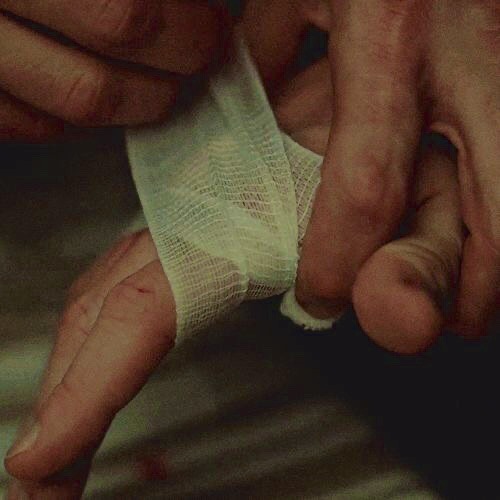
jailbreak husbands
“you got me!?” ⛓️ “yeah, i got you, leo.”
[ on spotify ]
Iris by The Goo Goo Dolls — Suicide Romantics by Des Rocs — Angel of Small Death and the Codeine Scene by Seafret — Train by Brick + Mortar — Me and My Husband by Mitski — All the Pretty Girls by KALEO — California by The Delta Saints — Strangers by The Kinks — R U Mine? by Arctic Monkeys — The Phoenix by Fall Out Boy — FUCK YOU HEATHER by boyish — Northern Attitude (with Hozier) by Noah Kahan — Way Down We Go (Recorded at Spotify Studios NYC) by KALEO — The Only Thing by Sufjan Stevens — Movement by Hozier — The Garden by The Crane Wives — Stuck In The Middle With You by Stealers Wheel — Interlude: I’m Not Angry Anymore by Paramore — Infra-red by Three Days Grace — Devil Town by Cavetown — Up To No Good by The Hoosiers — Dear Fellow Traveller by Sea Wolf — Just One Yesterday by Fall Out Boy & Foxes — The Chain by Fleetwood Mac — I Follow Rivers by Lykke Li — Hard Came the Rain by Rag’n’Bone Man — Take Me to Church by Hozier — I Hate Everything About You by Halocene & Violet Orlandi — Fourth of July by Sufjan Stevens — Howlin’ for You by The Black Keys — Come with Me Now by KONGOS — Golden Dandelions by Barns Courtney — Nothing Personal by Des Rocs — No Good by KALEO — Very Good Bad Thing by Mother Mother — Creep by Radiohead — Psalms 40:2 by The Mountain Goats — Romantic Homicide by d4vd — Sinners by Barns Courtney — Hold Me Like a Grudge by Fall Out Boy — Love Like You by Caleb Hyles — Come a Little Closer by Cage The Elephant — Left Hand Free by alt-J — John Wayne by Lady Gaga — FOR YOUR LOVE by Måneskin — Chasing Cars by Snow Patrol — Exit Music (For a Film) by Radiohead — Secret Worlds by The Amazing Devil — Banks by lincoln Dear Arkansas Daughter by Lady Lamb — Paul by Cavetown — Beautiful Crime by Tamer — Ebb and Flow by The Dead Tongues — Too Late To Say Goodbye by Cage The Elephant — Christmas Kids by Roar — Never Love an Anchor by The Crane Wives — Something in the Orange by Zach Bryan — Hell and You by Amigo the Devil — Vulture Culture by Fangclub —I Bet on Losing Dogs by Mitski — The Winner Takes It All by ABBA — With Or Without You by U2 — Passenger by Deftones — Broken Crown by Mumford & Sons — Bad Romance by Lady Gaga
#bit of a long one. will probably expand#remember when i used to draw?#sure haven’t done that in a while#anyways uh. enjoy#a way out#vinceo#velvet curates
45 notes
·
View notes
Text
i cant really do a proper proper chain on how people misread dumas’s work abt borgia cuz dat would take time i dont got outside of a claim made by a snopes article but where ‘white jesus’ came from himself u can see the historical project unfold in The Color of Christ: The Son of God and the Saga of Race in America by Edward Blum and Paul Harvey + i cant recall cuz its like 15048 o clock my time n aint sleep / am drunk but its books out there abt latam too n how colonization pushed for a caste system thats also deeply tied to divinity in the form of white jesus
and for depictions of a jesus that resembles the local pop. u can look into the kongo kingdom [The Kongolese Saint Anthony: Dona Beatriz Kimpa Vita and the Antonian Movement, 1684-1706: John Thornton] , ethiopia & nubia as well as many other depictions of jesus in christian regions of western asia+ worldwide
8 notes
·
View notes
Text




Decided to go ahead and finish this set of song reccomendations based on the Seeds. John 1. Eyes on the King -Benn 2. Villain - Wild Fire 3. This is Love - Air Traffic Controller 4. Nightmare - The Veer Union 5. Make Me Worse - Kings of The City 6. The Mystic - Adam Jensen 7. Up to No Good - The Hoosiers 8. Real Boy - Lola Blanc 9. Thief - Ill Factor Faith 1. Bride - San Fermin 2. Golden Dandelions - Barns Courtney 3. Sedated - Hozier 4. The Moon will Sing - The Crane Wives 5. Yours Alone - Brothers Bright 6. I can't sleep - Nina Chuba 7. Saints - Echoes 8. Breathe Me - Sia 9. Six - Sleeping At Last 10. Dead Walk - Redhook Jacob 1. Awake O' Sleeper - Brother's Bright 2. Repeat After Me - Kongos 3. Wild Lands - Koethe 4. Appetite for Destruction - Vo Williams 5. Wolf - Saint Mesa 6. Everybody Knows -Wild Fire 7. Bullet with Butterfly Wings - Tribe Society Cover 8. Outcast - Shinedown 9 Fire - Barns Courtney 10. Bad Blood - Welshly Arms Joseph 1. Used to the Darkness - Des Rocs 2. Providence - Poor Man's Poison 3. Flash Flood - Kongos 4. Mercy Down - Shayfer James 5. Dead Moon - Brick + Mortar 6. Holy Water - The Funeral Portrait 7. Ending - Koethe 8. Above and Below - The Bravery 9. Full Circle- Half Moon Run 10. Revelator Man -Tow'rs
#joseph seed#jacob seed#john seed#faith seed#far cry 5#my post#obviously these are just some songs that make me think of them
25 notes
·
View notes
Text
Working With Voodoo Spirits.

The Loa as Guardians One of Voodoo is the Loa. A Loa is a Voodoo spirit ( not god's) from Hati and used in Louisiana voodoo, that aids the practitioner in life, including with success, sexuality, spirituality, protection, healing and even in death.
Loa to angels or guardians. The Loa are divided into groups or “nations” known as Nanchons. Some are easier to approach and work with than others. Each and every one MUST be approached with a humble respect and working knowledge.
Saints and Voodoo:
Spirits Sycretization is the blending (or disguise) of one religious belief/custom with another. In the Voodoo tradition, the African slaves brought to Louisiana and other countries against their will were forced to adapt their captors’ religions – one of which was Catholicism.
Papa Legba is also portrayed as Saint Lazarus or Saint Anthony or St. Peter. Depending on the country your in.
You can work with their Saint forms, as well.The Nanchons (Families) of Loa, Voodoo Spirits. The Nanchons are families of Voodoo spirits, some from Africa and others from the New World.
Rada: Cool Voodoo Spirits.
The Rada nanchon is considered the “cool” Voodoo spirit family. The Loas within this nanchon are strong spirits and are mostly benevolent to their followers.
The Rada nanchon includes Papa Legba, Marassa, Ezili Freda, and Lasiren etc.
The Rada nanchon are the first to be called upon during ritual and are the oldest Loa from Africa.
Petro Loa:
Hot Voodoo Spirits.
Petro. These Voodoo spirits have roots in Haiti. The Voodoo spirits of the Petro nanchon are wilder and more apt to mischief and malevolence. Voodoo spirits in the Petro nanchon include Met Kalfu and Ezili Dantor. Ghede Loa are made up of spirits who have lived human lives before.
They are Voodoo spirits that watch over the graveyards and the dead. They often are boisterous and have wild party-like personalities.

The Barons lead this nanchon including Baron Samedi, Kriminel, and Maman Brigitte. (Although Maman is not that hot headed)
There are other Families Spirits that we including Igbo and Kongo, both heavily revered in Haiti. In addition to New Orleans Voodoo tradition works with some spirits that might not have a traditional Nanchon (family) including Marie Laveau, Dr. John, and Black Hawk.

Papa Ghede: (used in New Orleans)
Voodoo Spirit of Death. Papa Gede is a spirit who waits at the crossroads to take souls into the afterlife. He is considered the good counterpart to Baron Samedi.
Papa Ghede is often pictured smoking a cigar, wearing sunglasses, and donning a big smile. His personality is jovial and whacky. In addition to being the Voodoo spirit of death and graveyards, he is a spirit of sexuality.
Witches and Voodoo:
Spirits. Many of us would be frightened if followed by a Voodoo spirits, but maybe we shouldn’t be. These spirits, like Papa Ghede, guide us to the afterlife. But, sometimes, they may reach out to those they feel they could teach. I believe this is why (witches) outside the of Voodoo tradition are sometimes approached by the Loa. Because we have one foot in this world and one foot in the spirit world, it’s common for witches to see spirits from the Voodoo tradition and beyond. ( Like I said in another post even if your practicing traditional Hoodoo does not mean you can't be called by another spirit or deity from another religion)


Papa Legba:
Voodoo Spirit of the Crossroads.
Papa Legba is a Loa in the Rada nanchon. While he’s known to be a jokester, he is also benevolent. He is the son of two major Voodoo spirits: Dangabala Wedo and Ayida Wedo. Legba is the mediator between the Loa and the Great Master Spirit (God), like Saint Lazarus. Every traditional Voodoo ritual invites Legba into the circle first, as he opens the gates at the crossroads for the others to come through.
An introductory song may go something like this: Legba, open the gates for me So that I may go through Upon my return I shall greet the Lwa. Pspa Legba open the gate for me So that I may come in.Amen.
( or you can speak to St Lazarus) In Haitian Vodou, the image of Saint Lazarus for the crutch that he uses for support or St Peter for the keys that he holds, are used to represent Papa Legba. God and humans, in many ways similar to Jesus Christ.
So You Want to Work with Voodoo Spirits?
If you plan to invite the Loa into your rituals or work with them in your (witchcraft), do thorough research first. Know exactly which nanchon and Loa you’re working with and what their traits are, whether benevolent or mischievous. Know what offerings they prefer. You must show respect.
15 notes
·
View notes
Text
I'm going to take a guess and say that this is the only post on Tumblr connecting "Locked Tomb" and "Land of the Lustrous", despite the obvious comparisons between John and Kongo, and then the Lyctors to the Minerals.
#the locked tomb#locked tomb#houseki no kuni#land of the lustrous#category: anime#a shiny book tag appears
4 notes
·
View notes
Text
My foobar2000 Wrap for 2023
I never got into Spotify so I don't have a Wrap, and I am JEALOUS of you motherfuckers, so I thought I would do a little something-something for myself. I can do this because this is my own blog and I am nothing if not fully self-realized (ie, free to post anything I like on the internet). There are 20 of them because I kept finding songs that made me go OH YES. THAT ONE WAS POWERFUL. THANK U
In short, from most-important and -played to least:
"Come Down" by Anderson .Paak (2016)
"C'mon Baby, Cry" by Orville Peck (2022)
"Light of Day" (feat. Ólafur Arnalds) by ODESZA (2022)
"Lady Luck" by Richard Swift (2009)
"Chicago" by Sufjan Stevens (2005)
"Wish That You Were Here" by Florence + The Machine (2016)
"Take Me to Church" by Sinead O'Connor (2014)
"Lay Down" by Caravan Palace (2015)
"It Still Hurts (I Just Don't Know Why)" by EVA (2017)
"Best Disaster" by Cuco (2023)
"Mr. Tillman" by Father John Misty (2018)
"Bad Motherfucker (I.O.E.2 Version)" (feat. Dasha Charusha) by Biting Elbows (2013)
"Nemesis" by Shriekback (1990)
"The Hardest Cut" by Spoon (2022)
"Grounds for Divorce" by Elbow (2009)
"Emperor's New Clothes" by Panic! At the Disco (2016)
"Kids" by MGMT (2008)
"Kids These Days" by Kongos (2014)
"Sisyphus" by Andrew Bird (2019)
"Lonely Calling" by Arc De Soleil (2020)
1 note
·
View note
Text
Events 12.18 (before 1960)
1118 – The city of Zaragoza is conquered by king Alfonso I of Aragon from the Almoravid. 1271 – Kublai Khan renames his empire "Yuan" (元 yuán), officially marking the start of the Yuan dynasty of Mongolia and China. 1499 – A rebellion breaks out in Alpujarras in response to the forced conversions of Muslims in Spain. 1601–1900 1622 – Portuguese forces score a military victory over the Kingdom of Kongo at the Battle of Mbumbi in present-day Angola. 1655 – The Whitehall Conference ends with the determination that there was no law preventing Jews from re-entering England after the Edict of Expulsion of 1290. 1777 – The United States celebrates its first Thanksgiving, marking the recent victory by the American rebels over British General John Burgoyne at Saratoga in October. 1787 – New Jersey becomes the third state to ratify the U.S. Constitution. 1793 – Surrender of the frigate La Lutine by French Royalists to Lord Samuel Hood; renamed HMS Lutine, she later becomes a famous treasure wreck. 1833 – The national anthem of the Russian Empire, "God Save the Tsar!", is first performed. 1854 – The Legislative Assembly of the Province of Canada abolishes the seigneurial system. 1865 – US Secretary of State William Seward proclaims the adoption of the Thirteenth Amendment, prohibiting slavery throughout the United States. 1867 – A magnitude 7.0 earthquakes strikes off the coast of Taiwan, triggering a tsunami and killing at least 580 people. 1878 – The Al-Thani family become the rulers of the state of Qatar. 1892 – Premiere performance of The Nutcracker by Pyotr Ilyich Tchaikovsky in Saint Petersburg, Russia. 1898 – Gaston de Chasseloup-Laubat sets the first officially recognized land speed record of 63.159 km/h (39.245 mph) in a Jeantaud electric car. 1916 – World War I: The Battle of Verdun ends when the second French offensive pushes the Germans back two or three kilometres, causing them to cease their attacks. 1917 – The resolution containing the language of the Eighteenth Amendment to enact Prohibition is passed by the United States Congress. 1932 – The Chicago Bears defeat the Portsmouth Spartans in the first NFL playoff game to win the NFL Championship. 1935 – The Lanka Sama Samaja Party is founded in Ceylon. 1939 – World War II: The Battle of the Heligoland Bight, the first major air battle of the war, takes place. 1944 – World War II: XX Bomber Command responds to the Japanese Operation Ichi-Go offensive by dropping five hundred tons of incendiary bombs on a supply base in Hankow, China. 1944 – The Supreme Court of the United States issued its decision in Korematsu v. United States supporting Franklin D. Roosevelt's Executive Order 9066 which cleared the way for the incarceration of nearly all 120,000 Japanese Americans, two-thirds of whom were U.S. citizens, born and raised in the United States. 1957 – A violent F5 tornado wipes out the entire community of Sunfield, Illinois. 1958 – Project SCORE, the world's first communications satellite, is launched.
0 notes